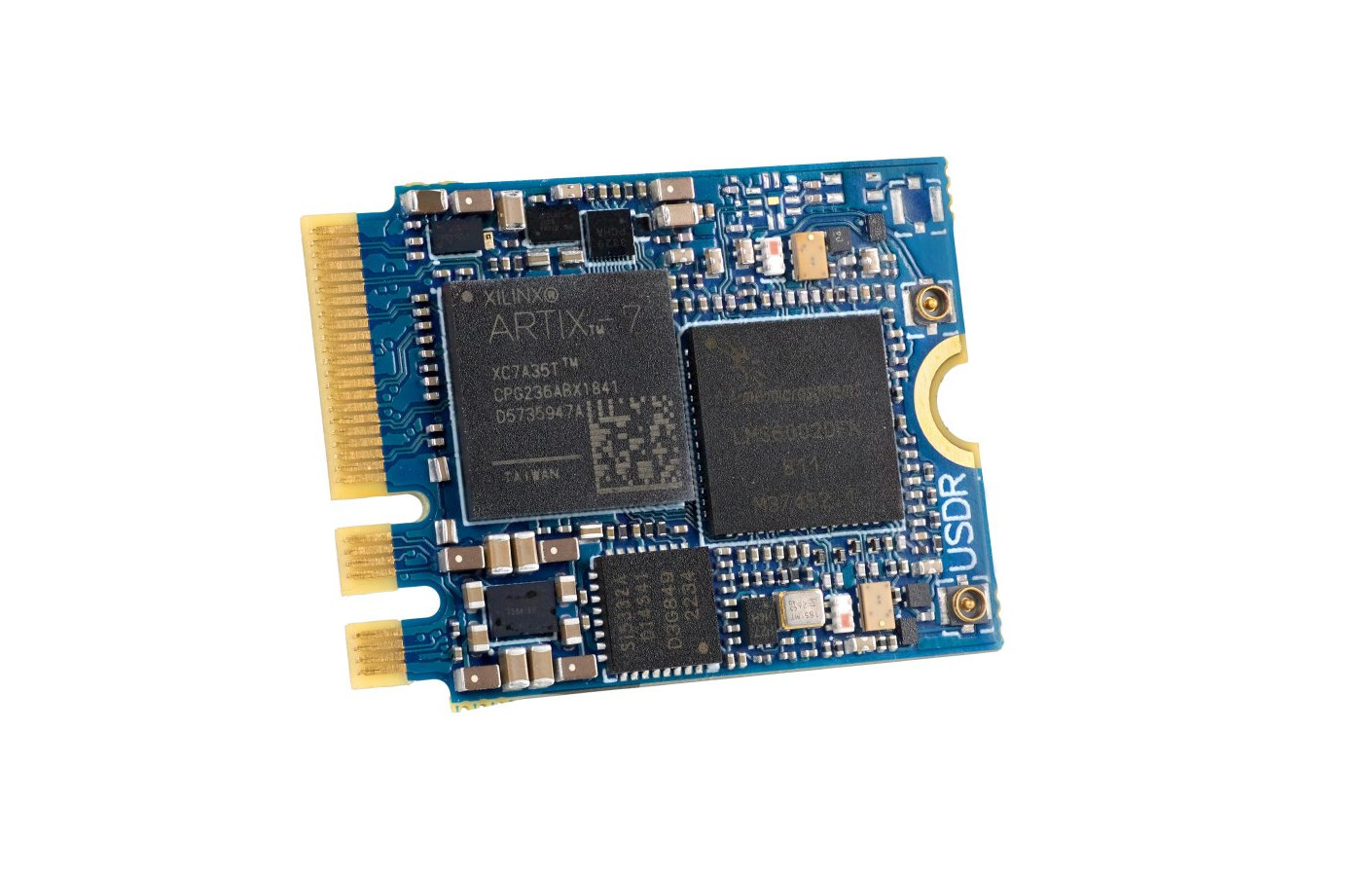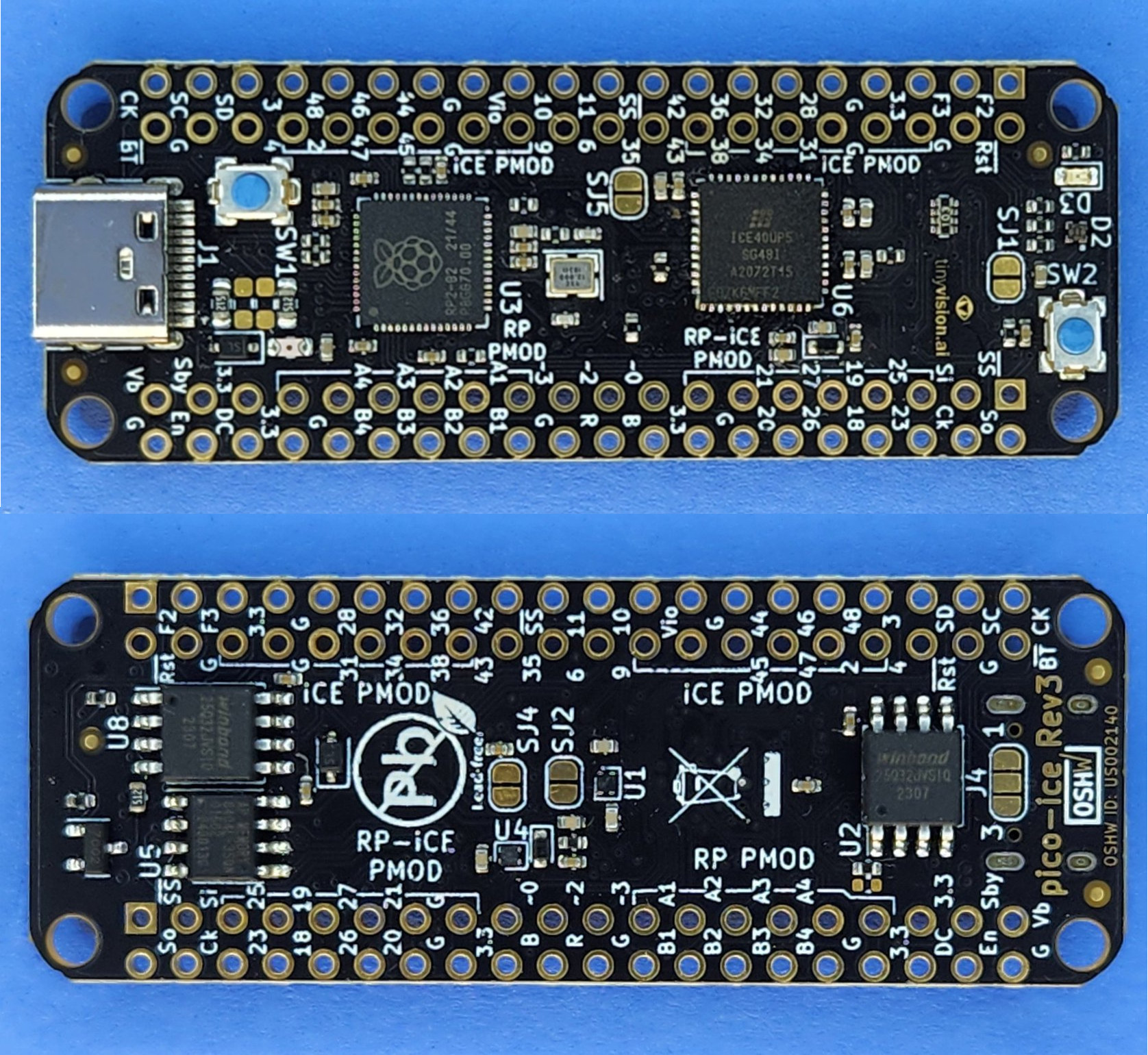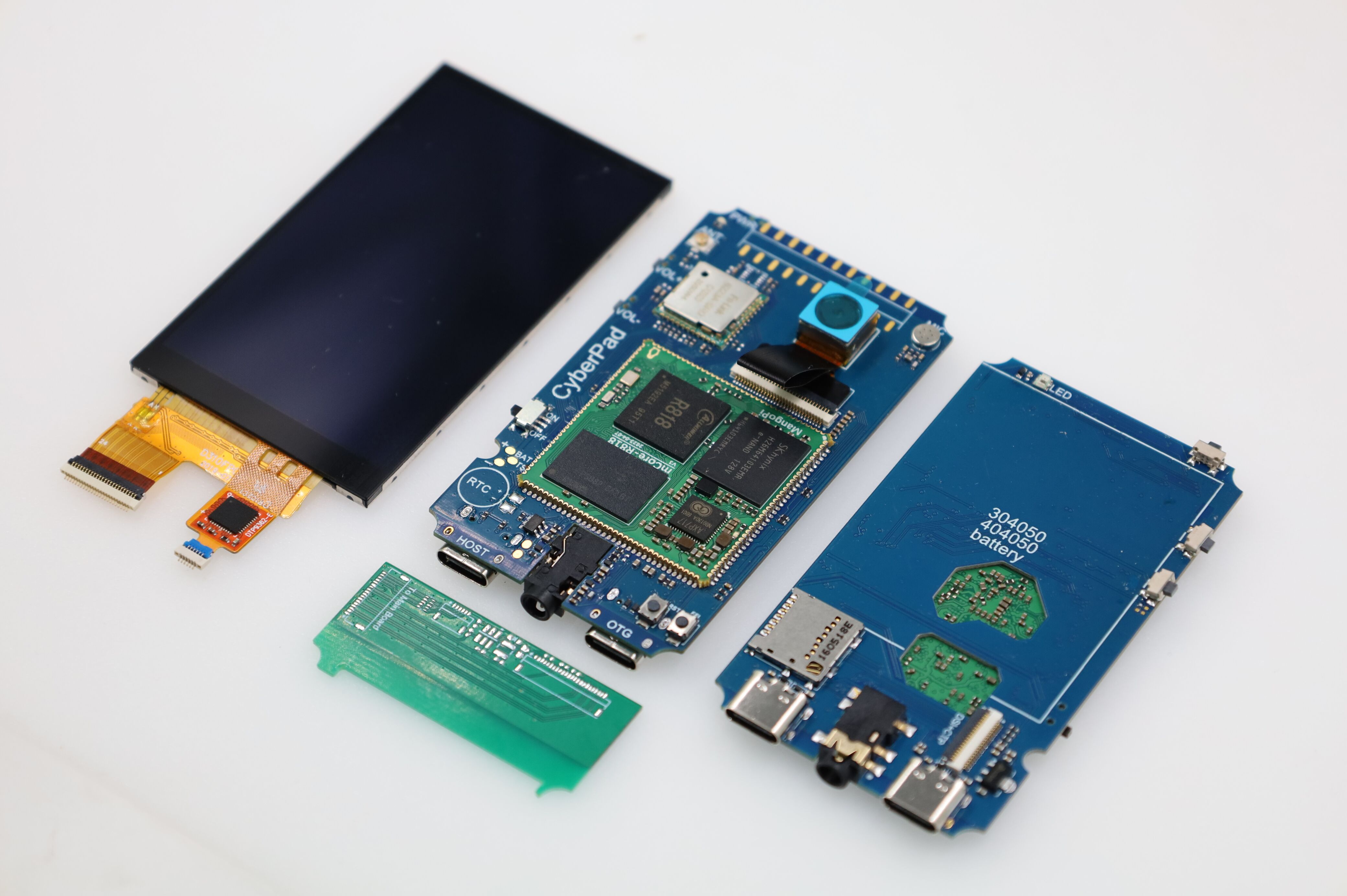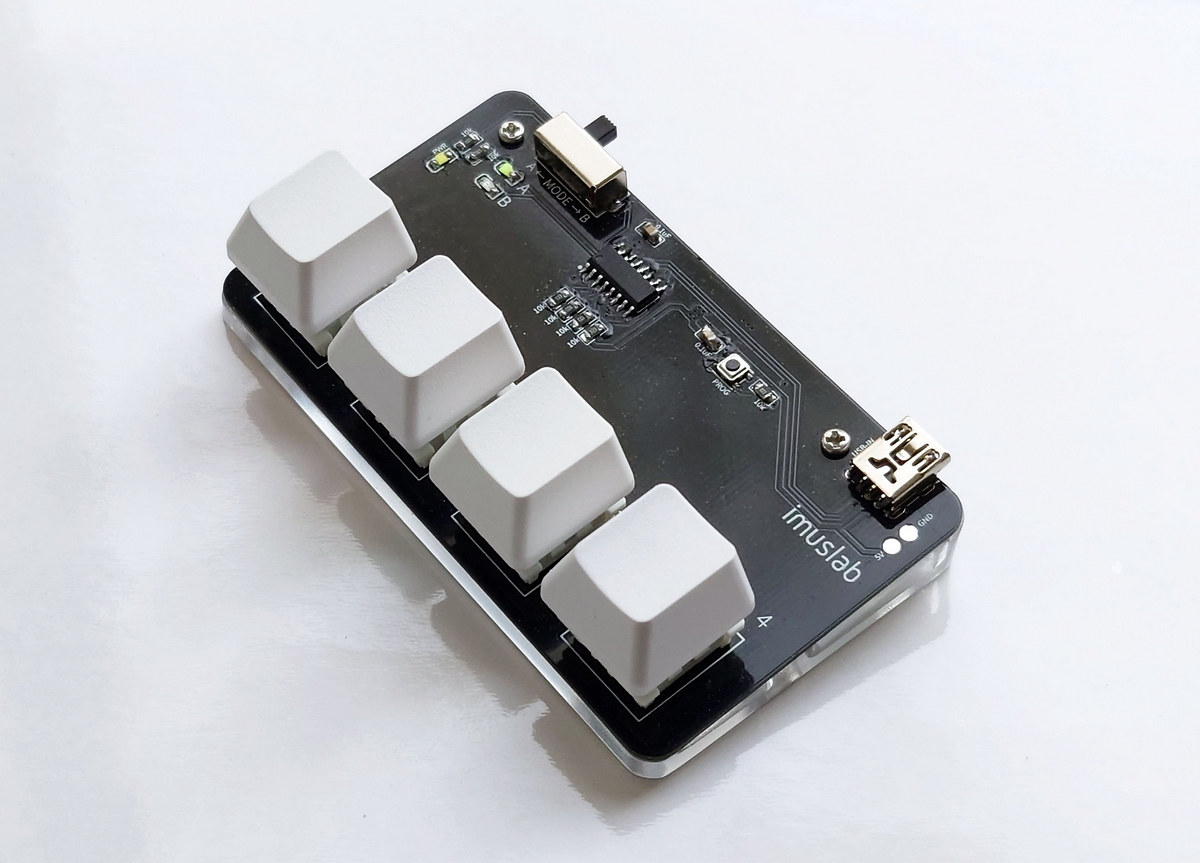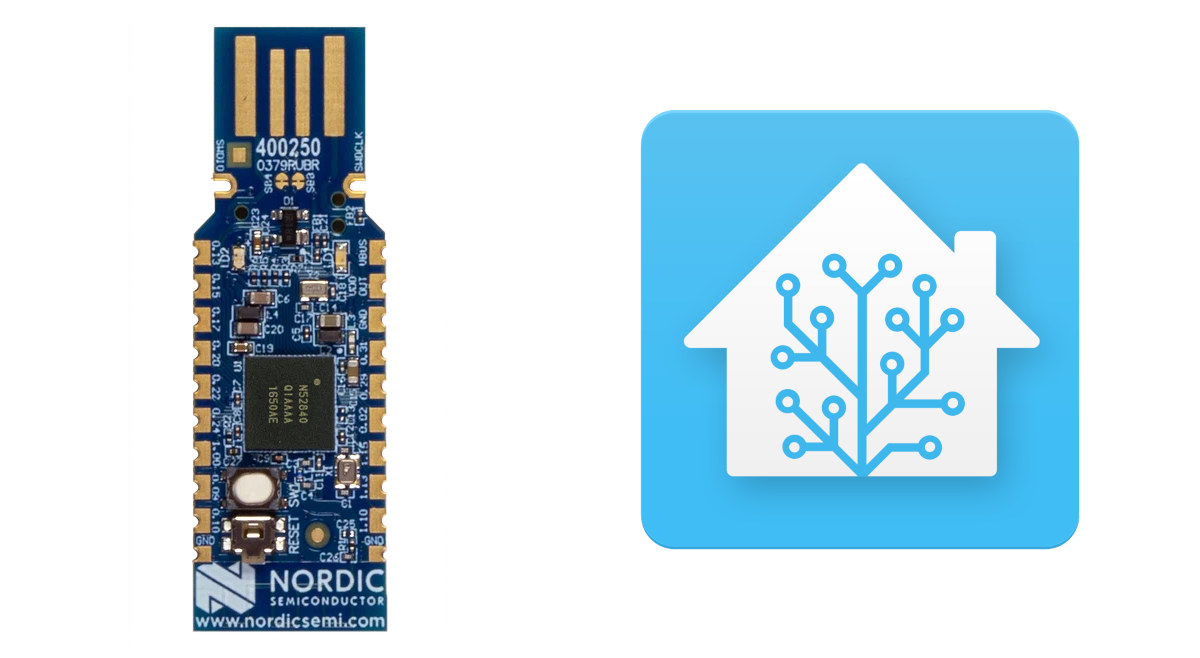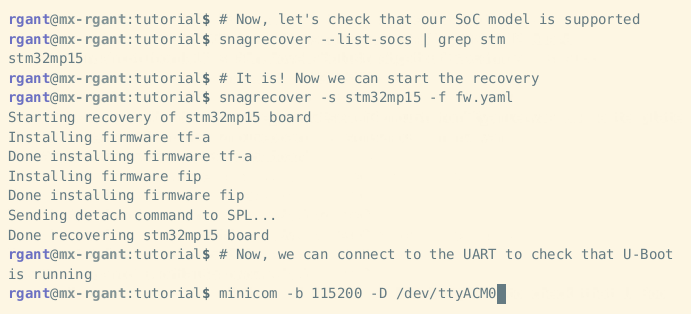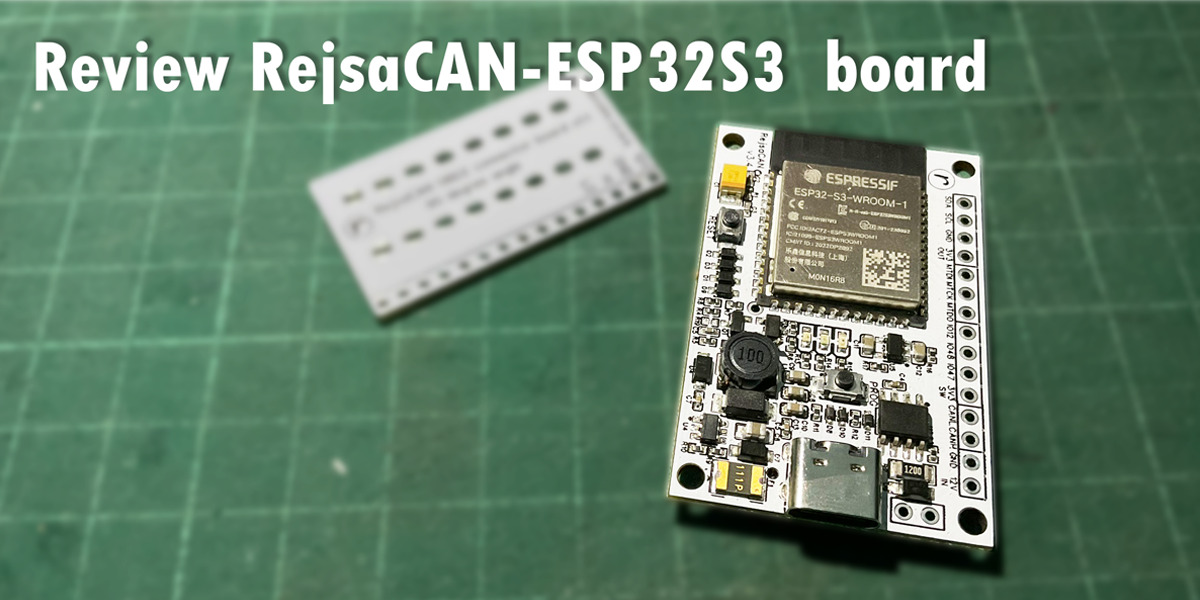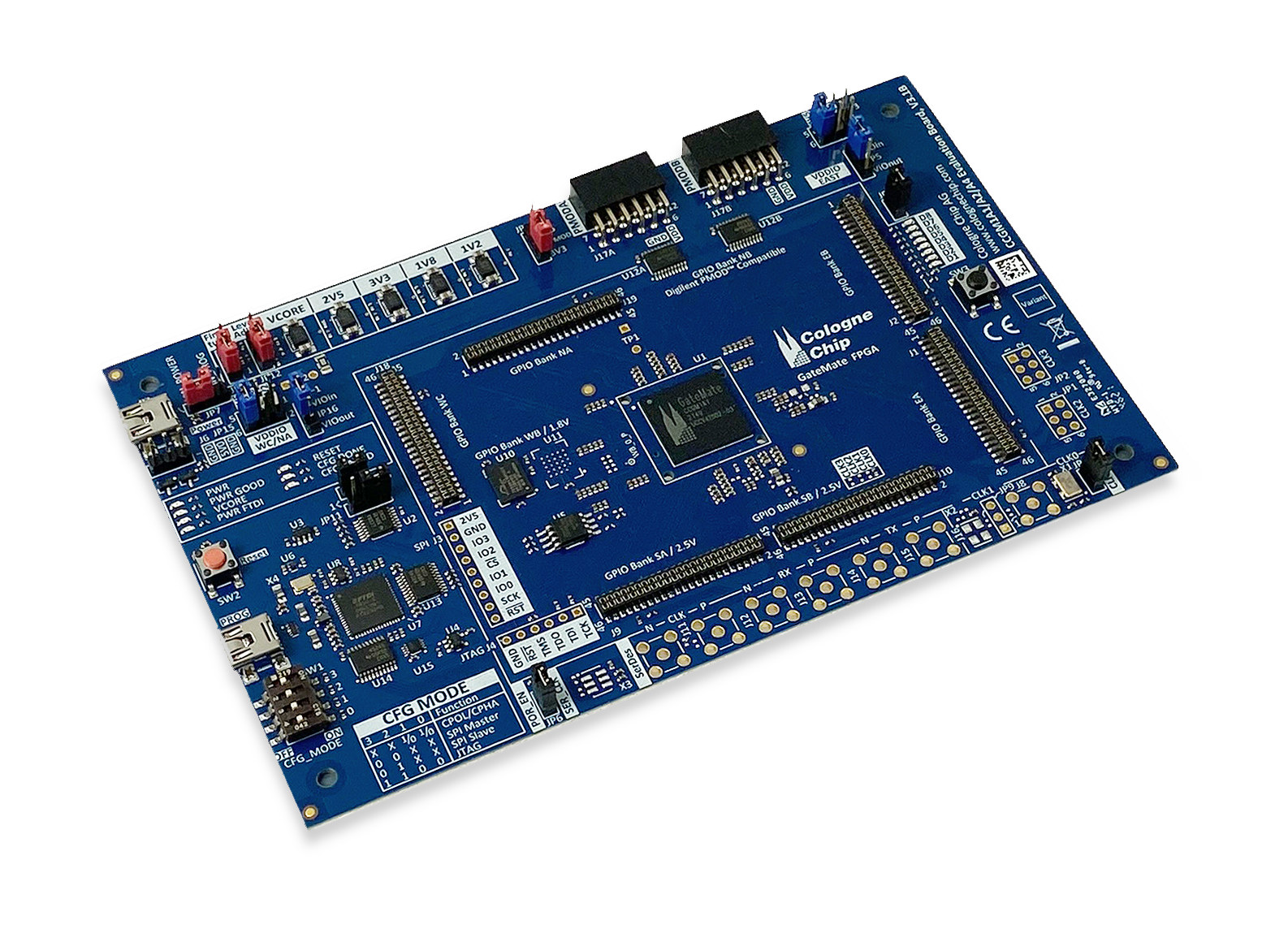uSDR is an embedded software-defined radio (SDR) M.2 board based on an AMD Embedded Artix-7 FPGA and designed to be controlled in the Chrome, Opera, or Edge browser without specific drivers or software thanks to WebUSB technology. The module can be inserted into any compatible host, or through M.2, USB, mini PCIe or PCIe adapters, and used from a web browser with ready-to-use applications such as a spectrum monitor or a signal analyzer, or your own JavaScript, C/C++, Rust, Go, or C# application thanks to WebAssembly and the Emscripten project. uSDR specifications: RFIC – Lime Microsystems LMS6002D programmable RF (FPRF) transceiver IC operates from 300MHz to 3.8GHz FPGA – AMD Embedded XC7A35T (Artix-7) FPGA with 33,280 logic cells Full-duplex TX & RX Frequency range – 300 – 3700 MHz (usable range typically starts from 230 MHz) RX/TX Bandwidth – 0.75 – 28 MHz plus bypass mode Clock generator – SI5332A […]
Pico-Ice board combines Raspberry Pi RP2040 MCU with Lattice ICE40 UltraPlus 5K FPGA
tinyVision.ai Pico-Ice is a development board with a Raspberry Pi RP2040 MCU and a Lattice ICE40 UltraPlus 5K FPGA connected through an 8-bit bus. The Arm Cortex-M0+ microcontroller provides the clock for the FPGA and can program the FPGA directly or the dedicated FPGA flash using a drag-drop of a UF2 file. Just a few days ago we wrote about the LILYGO T-FPGA board that combines an ESP32-S3 wireless MCU with a Gowin FPGA connected through a 6-bit bus, and the Pico-Ice board provides a similar option with different chips and without wireless connectivity. Pico-Ice specifications: MCU – Raspberry Pi RP2040 dual-core Cortex-M0+ microcontroller @ 133 MHz with 264KB SRAM with all pins exposed FPGA – Lattice UltraPlus iCE40UP5K FPGA with 5.3K LUTs, 1Mbit SPRAM, 120Kbit DPRAM, 8x multipliers with all pins brought out Memory & storage chips MCU – 4MB QSPI flash FPGA – 4MB QSPI Flash, 8MB low […]
MangoPi mCore-R818 module powers CyberPad 3.1-inch handheld android “tablet”
mCore-R818 is the first time that MangoPi adopts the design combination of a core-lite module and a carrier board. As its name suggests, it is an AllWinner R818 SoM whose SoC integrates an Imagination PowerVR GE8300 GPU for UI rendering, can drive MIPI DSI, LVDS, and RGB displays, as well as cameras through a MIPI CSI interface, 8MP/5MP/2MP interfaces. The Allwinner R818 system-on-module powers a feature-rich carrier board as well as an upcoming Cyberpad Android “tablet” with a 3.1-inch display. MangoPi mCore-R818 The package design of the processor itself is small, so the MCore-R818 core board is only 3x3cm in size, but still contains four components with the Allwinner R818, the eMMC flash, LPDDR4 memory, and the AXP717 PMU. MangoPi provides two hardware configurations: 2GB DDR with 16GB eMMC flash, and 4GB DDR with 32GB eMMC flash. MCore-R818 Core Lite Specifications: SoC – Allwinner R818 CPU – Quad-core Arm Cortex-A53 […]
$10 Arduino-programmable WCH CH552 macro keyboard is configurable from a web browser
The 4xMacropad is a low-cost, open-source hardware 4-key mechanical macro keyboard based on WCH CH552G 8051-compatible USB microcontroller and whose keys can easily be configured from a web browser generating an Arduino sketch. The CH55x family has been around for several years, and we first wrote about the sub-$2 CH551 Mini development board over 5 years ago, but CH552 variants are also found in more recent hardware such as the Turing Screen Screen information display and another rotary encoder shield with two mechanical keys. The 4xMacropad macro keyboard is another CH522 design, but it’s open-source. 4xMacroPad specifications: MCU – WCH CH552G 8051-compatible microcontroller @ 24 MHz with 16KB flash, 1.25KB SRAM USB – 1x mini USB port for power User input – 4x mechanical key switches with keypads Misc – Power LED, Mode switch (A or B), user button Power Supply – 5V via mini USB port The EasyEDA files, […]
zigpy-zboss library makes Nordic Semi nRF52840 Zigbee dongles compatible with Home Assistant
zigpy-zboss is a Python library that adds support for Nordic Semiconductor nRF52840 modules to zigpy open-source Python Zigbee stack project, as well as other Network Co-Processor radios that run firmware based on ZBOSS Open Initiative (ZOI). This enables integration with compatible Zigbee gateway implementations such as Home Assistant’s ZHA integration component and allows users to directly control Zigbee devices from a wide range of manufacturers such as IKEA, Philips Hue, SmartSung SmartThings, ITEAD SONOFF, Xiaomi Aqara, and others. Home Assistant’s ZHA integration already worked with Zigbee dongles based on Silicon Labs Mighty Gecko EFR32MG21 or Texas Instruments CC2652P microcontrollers, but now it’s possible to use nRF52840 dongles and development as Zigbee Coordinators thanks to the zigpy-zboss library. The zigpy-zboss ZBOSS radio library for zigpy source code and resources can be found on GitHub, but note that this is still an unofficial and experimental port, so testers need to manually […]
Snagboot is an open-source cross-vendor recovery tool for embedded targets
Bootlin has just released the Snagboot open-source recovery tool for embedded platforms designed to work with multiple vendors, and currently STMicro STM32MP1, Microchip SAMA5, NXP i.MX6/7/8, Texas Instruments AM335x and AM62x, and Allwinner “sunxi” processors are supported. Silicon vendors usually provide firmware flashing tools, some closed-source binaries, that only work with their hardware. So if you work on STM32MP1 you’d use STM32CubeProgrammer, while SAM-BA is the tool for Microchip processors, NXP i.MX SoC relies on UUU, and if you’ve ever worked on Allwinner processors you’re probably family with sunxi-fel. Bootlin aims to replace all those with the Snagboot recovery tool. The Python tool is comprised of two parts: snagrecover using vendor-specific ROM code mechanisms to initialize external RAM and run the bootloader (typically U-Boot) without modifying any non-volatile memories. snagflash communicates with the bootloader over USB to flash system images to non-volatile memories, using either DFU, USB Mass Storage, or […]
Programming RejsaCAN-ESP32-S3 CAN bus board with Arduino for car “hacking”
The RejsaCAN-ESP32-S3 is an ESP32-S3 board suitable for developers who want to build a car-related project. It can control or read the data from the OBD-II connector in your car using 2.4 GHz Wi-Fi or/and Bluetooth 5 (LE), or for IoT projects, connecting a sensor to the board and sending data to an app, the cloud, or log the data to a microSD Card. The board is designed to be small enough to be installed in a car. The board is an evolution of the previous ESP32-based RejsaCAN-ESP32 with the developer – Magnus Thomé – switching to the ESP32-S3 chip as previously announced. The main specifications are similar, but the ESP32-S3 is a newer LX7 processor with Bluetooth LE 5.0 support, and the ESP32 board had to use a USB-to-serial chip to communicate or upload the program through a PC, but the new board uses the USB interface on […]
Cologne GateMate A1 FPGA chip with 20,480 LE is programmable with an open-source toolchain
Cologne Chip GateMate A1 is an FPGA with 20,480 logic elements best suited for lower-power applications and programmable with an open-source toolchain based on nMigen, Yosys, and other open-source tools. The A1 FPGA also comes with 1,280 Kbit block SRAM, four PLLs, a quad SPI interface up to 100 MHz, a 5Gbps SerDes interface, and the company offers an evaluation board to get started with development. GateMate A1 specifications: CPE Architecture 20,480 programmable elements (CPE) for combinatorial and sequential logic 40,960 Latches / Flip-Flops within programmable elements CPE consists of LUT-tree with 8 inputs Each CPE is configurable as a 2-bit full-adder or 2×2-bit multipliers Features 4x programmable PLLs quad SPI interface up to 100 MHz 1,280 Kbit dual-ported block RAM with variable data widths in 32 x 40 Kbit RAM cells Multipliers with arbitrary size implementable in CPE array Multiple clocking schemas All 162 GPIOs are configurable as single-ended […]


